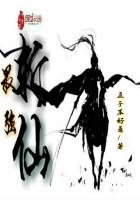By a most fortunate chance, with this populous family of honey gatherers was allied the whole hunting tribe. The builders' men had distributed here and there in the harmas great mounds of sand and heaps of stones, with a view to running up some surrounding walls. The work dragged on slowly; and the materials found occupants from the first year. The mason bees had chosen the interstices between the stones as a dormitory where to pass the night, in serried groups. The powerful eyed lizard, who, when close pressed, attacks both man and dog, wide mouthed, had selected a cave wherein to lie in wait for the passing scarab [a dung beetle also known as the sacred beetle]; the black-eared chat, garbed like a Dominican, white-frocked with black wings, sat on the top stone, singing his short rustic lay: his nest, with its sky blue eggs, must be somewhere in the heap. The little Dominican disappeared with the loads of stones. I regret him: he would have been a charming neighbor. The eyed lizard I do not regret at all.
The sand sheltered a different colony. Here, the Bembeces [digger wasps] were sweeping the threshold of their burrows, flinging a curve of dust behind them; the Languedocian Sphex was dragging her Ephippigera [a green grasshopper] by the antennae; a Stizus [a hunting wasp] was storing her preserves of Cicadellae [froghoppers]. To my sorrow, the masons ended by evicting the sporting tribe; but, should I ever wish to recall it, I have but to renew the mounds of sand: they will soon all be there.
Hunters that have not disappeared, their homes being different, are the Ammophilae, whom I see fluttering, one in spring, the others in autumn, along the garden walks and over the lawns, in search of a caterpillar; the Pompili [digger or hunting wasp], who travel alertly, beating their wings and rummaging in every corner in quest of a spider. The largest of them waylays the Narbonne Lycosa [known also as the black-bellied tarantula], whose burrow is not infrequent in the harmas. This burrow is a vertical well, with a curb of fescue grass intertwined with silk. You can see the eyes of the mighty Spider gleam at the bottom of the den like little diamonds, an object of terror to most. What a prey and what dangerous hunting for the Pompilus! And here, on a hot summer afternoon, is the Amazon ant, who leaves her barrack rooms in long battalions and marches far afield to hunt for slaves. We will follow her in her raids when we find time. Here again, around a heap of grasses turned to mould, are Scoliae [large hunting wasps] an inch and a half long, who fly gracefully and dive into the heap, attracted by a rich prey, the grubs of Lamellicorns, Orycotes and Ceotoniae [various beetles].
What subjects for study! And there are more to come. The house was as utterly deserted as the ground. When man was gone and peace assured, the animal hastily seized on everything. The warbler took up his abode in the lilac shrubs; the greenfinch settled in the thick shelter of the cypresses; the sparrow carted rags and straw under every slate; the Serin finch, whose downy nest is no bigger than half an apricot, came and chirped in the plane tree tops; the Scops made a habit of uttering his monotonous, piping note here, of an evening; the bird of Pallas Athene, the owl, came hurrying along to hoot and hiss.














